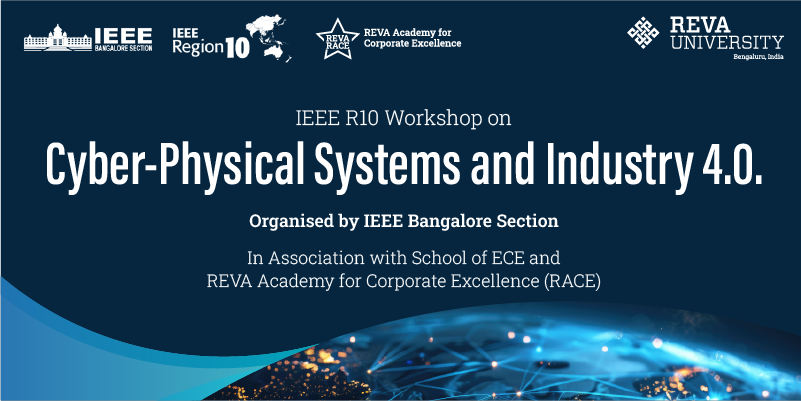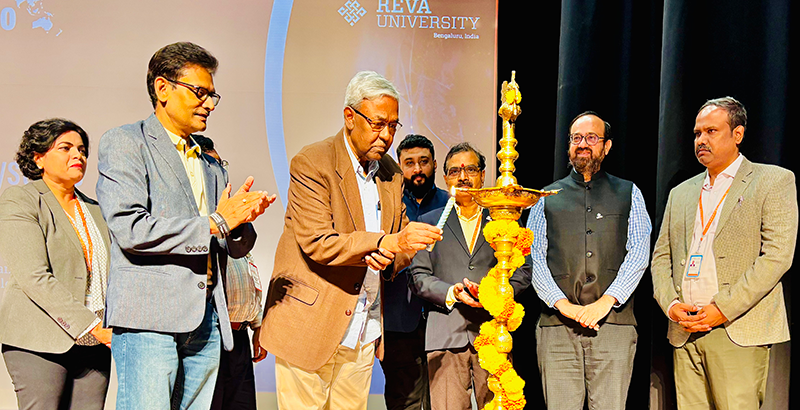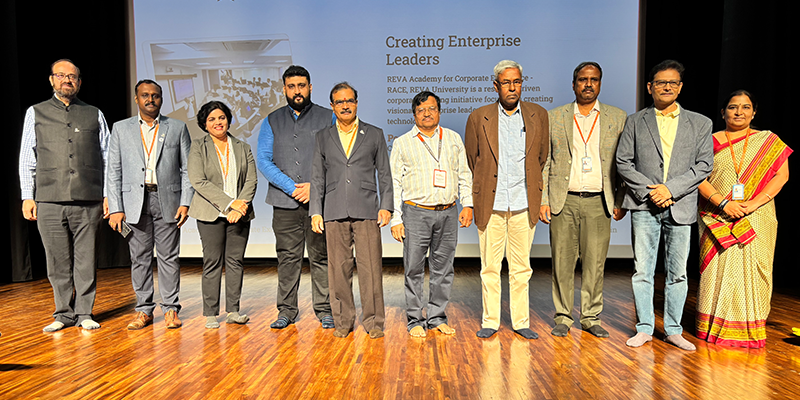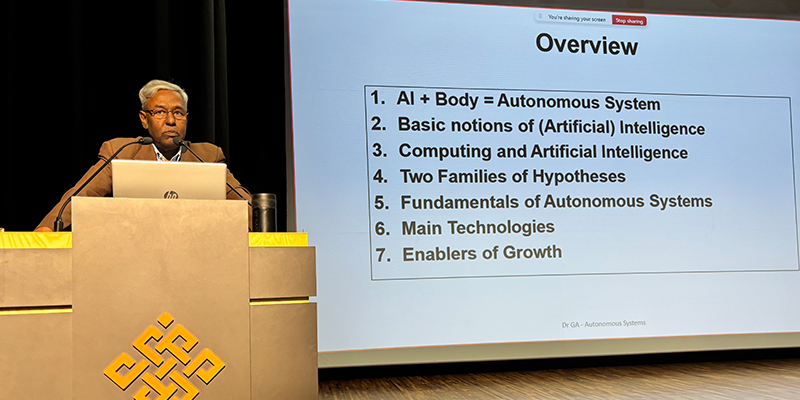Revolutionizing Industry 4.0: Cyber-Physical Systems and Autonomous Technologies Unveiled

As technology marches forward, the lines between the digital and physical worlds are blurring, giving rise to a new frontier of innovation—Cyber-Physical Systems (CPS). These systems are not just buzzwords; they’re the foundation of Industry 4.0, driving the next wave of transformation in industries across the globe. At the IEEE-sponsored workshop held on September 20, 2024, at REVA Academy for Corporate Excellence in collaboration with the School of ECE, Dr. Athithan Gopalasamy, a leading expert and former DG of DRDO, DS-CAIR, presented a compelling discussion on Autonomous Systems—a key component of CPS.

Let’s explore the transformative potential of CPS and autonomous systems, as well as the pivotal insights shared by Dr. Athithan Gopalasamy during his keynote speech.
What is a Cyber-Physical System?
To set the stage, Cyber-Physical Systems (CPS) are advanced systems where physical processes (such as machinery, sensors, or vehicles) are deeply intertwined with software, computing, and networking. The defining feature of a CPS is its ability to interact with its physical environment in real-time, using data-driven algorithms to enhance decision-making and optimize functionality. CPS is designed to sense, monitor, and control physical processes with minimal human intervention, providing a bridge between the virtual and physical realms.


Examples of CPS include autonomous vehicles, smart grids, robot-assisted surgery, and intelligent manufacturing systems. In essence, CPS enables seamless collaboration between digital computation and the physical world, a cornerstone of Industry 4.0.
Autonomous Systems: The AI-Powered Core of CPS
In his presentation, Dr. Gopalasamy framed Autonomous Systems as a critical subset of CPS, where Artificial Intelligence (AI) meets physical systems to create machines that can act independently in dynamic environments. Here’s how he broke down the essentials of autonomous systems:

- AI + Body = Autonomous System: At its core, an autonomous system combines AI’s computational power with a physical entity (the “body”) that can act in the real world. Whether it’s navigating a vehicle or performing surgery, these systems rely on AI to process sensory data, build situational awareness, and execute actions.
- Top-Level Capabilities:
- Sensing the environment: Autonomous systems are equipped with sensors to perceive their surroundings.
- Situational Awareness: Using data from sensors, the system must understand its environment to make informed decisions.
- Motor Actuation: The system’s physical body must be able to act, whether that means moving through space or manipulating objects.
- Task Execution: Finally, autonomous systems must be able to complete tasks autonomously, such as navigating a car through traffic or operating a robotic arm on an assembly line.
The Technologies Driving Autonomous Systems
Dr. Gopalasamy elaborated on the advanced technologies that enable autonomous systems to thrive within CPS. Key technologies include:
- Perception: This involves using sensors like cameras, GPS, and LiDAR to gather real-time data. Algorithms such as YOLO (You Only Look Once) for object detection and Kalman Filters for data fusion are vital for the system’s understanding of its surroundings.
- Navigation: Autonomous systems require advanced pathfinding techniques, such as Voronoi diagrams and graph-based algorithms (e.g., A* and Dijkstra’s algorithms) to determine optimal routes and avoid obstacles.
- Motion Control: Dr. Gopalasamy discussed various propulsion systems, from electric motors to hydrogen-powered engines, which are essential for delivering the system’s physical actions. These propulsion technologies, combined with AI, enable autonomy in everything from drones to self-driving cars.
Levels of Autonomy: Man and Machine Working Together
Dr. Gopalasamy’s insights into the levels of autonomy within CPS were particularly illuminating. Autonomous systems operate on different scales of independence from human control:
- Man-in-the-loop: Human operators are directly involved in controlling the system, with the system providing assistance.
- Man-on-the-loop: Humans oversee the system’s operations but only intervene when necessary.
- Man-out-of-the-loop: The system operates fully autonomously, with no real-time human oversight required.
This concept of autonomy is essential for industries looking to adopt CPS, whether for self-driving cars, industrial robotics, or unmanned aerial vehicles.
The Future of Autonomous Systems in CPS
The workshop also touched on the future growth of autonomous systems within CPS. Dr. Gopalasamy highlighted several enablers of growth:
- Advances in AI and Machine Learning: Continuous development in AI algorithms, such as neural networks and deep learning, enables autonomous systems to learn from data and improve their performance over time.
- Enhanced Computing Power: Thanks to the exponential growth of computing capacity (in line with Moore’s Law), autonomous systems can now process vast amounts of data in real-time, enhancing their decision-making and performance.
- Standards and Governance: As CPS becomes more widespread, ensuring the ethical use of AI and implementing robust cybersecurity measures will be critical. Dr. Gopalasamy referenced emerging standards, such as the EU AI Act 2024, which aims to regulate high-risk AI systems.
Conclusion
The IEEE-sponsored workshop at REVA University offered a glimpse into the future of Cyber-Physical Systems and the Autonomous Systems that power them. Dr. Athithan Gopalasamy’s deep dive into the intersection of AI, robotics, and autonomous technologies provided participants with invaluable insights into how these systems will transform industries in the years to come.
As we move toward a world where smart factories, autonomous vehicles, and AI-driven healthcare become the norm, the fusion of CPS with autonomous technologies will continue to drive the Industry 4.0 revolution, shaping a future where digital intelligence meets physical reality.



